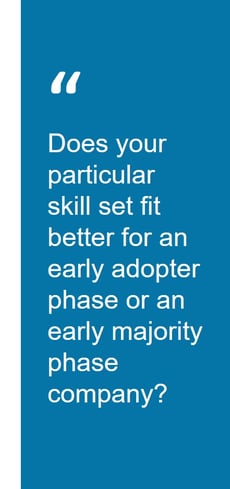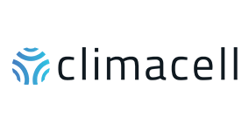
Your Next Sales Career Opportunity: A Conversation For Sales Professionals
Categories: Sales Transformation | Sales Productivity
Chad Peets is a Managing Director of Sutter Hill Ventures. He is responsible for GTM hiring globally and has placed more than 2500 software sales executives. Chad shared his recent conversation with John McMahon with The Command Center blog. McMahon is a Force Management customer, a sales veteran and an adviser to some of the world's most successful software companies.
Throughout my 20-year career of recruiting for and building software/SaaS sales organizations, no one has taught me more about my craft than John McMahon. The incredible part of my statement is that John has never been a recruiter. I believe that John is one of the most successful and influential people in the SaaS Industry. For instance, John helped develop Adam Aarons (former CRO of OKTA), Dali Rajic (CRO of AppDynamics), Chris Degnan (CRO of Snowflake), Dan Fougere (CRO of Datadog), Cedric Pech (CRO of MongoDB) and even John Kaplan and Grant Wilson of Force Management. He has created such a legacy that often the first request I get when contracting a CRO search is to find “A McMahon guy.” At Sutter Hill, Mike Speiser and I are very fortunate that John works closely with us on a number of our portfolio companies. I know that one of topics John most frequently discusses with sales professionals is how they should evaluate their next career move. That decision can put you on life-changing trajectory, so it requires due diligence. As someone who helps companies find elite talent, I find his perspective a true value add to anyone pursuing a new sales role.

Picking Your Next Sales Opportunity
John, we connect with people every day who want to know how to pick a winner the next time they seek a career move. You've chosen many winning startup companies where you were the Chief Revenue Officer, companies like PTC, GeoTel, and Bladelogic, all of which became unicorns. Then, as a board member or consultant, I know you've also been with many other startups that turned into unicorns like Snowflake, MongoDB, Glassdoor, Sprinklr, Hubspot, Thoughtspot, and App Dynamics. How have you been able to pick so many winners?
It's all luck. I have a crystal ball and a pack of tarot cards.
Well, thanks for talking with us John! Seriously, though, I talk to many people who are seeking new opportunities, but have trouble picking a winner. They all want to know how they could be better at evaluating companies for potential success.
I always start by thinking about what a sales rep is going to say to the customer sitting across the table. Is the message compelling enough that the customer wants to tell other people in the company about the solution immediately? Does the product target vital mission critical pain points in an organization? Do I believe reps can build a powerful cost justification to drive higher average deal sizes? Is this product a “need to have” or a “nice to have”?
So, you're saying before you take on the role of selling something, you need to understand how the product solves specific pain points for the customer?
Yes, the solution has to answer what I call the “3 Whys”:
- Why do I have to buy?
- Why do I have to buy from you?
- Why do I have to buy it now?
Okay, so let's walk through each of the “3 Whys”.
I’ve found that people typically listen to the question, "why do I have to buy?" However, only hear the words “have to buy.” They leave out the “I” in the question, which is critical because the question, “WHY DO I have to buy” speaks to two items:
- Customer pain points.
- The level of person the pain affects and their priority to remedy the pain.
Does the solution solve pain points affecting top-line revenue, bottom line profitability or significantly reduce risk to the company? Can you accurately describe the pain points your product affects for different customer use cases in different industries? How does resolving those pain points translate into quantifiable business value?
Alternatively, is the product merely a helpful tool with a few fancy features? Every company has hundreds of pain points, some of which they choose to live with and other pains that they would be relieved to solve. Not every pain point has equal weight or priority to address. As an example, can you remedy the wound with an ice pack and some ibuprofen or is it making you immobile and preventing you from performing your job?
Who in the organization will your solution effect? Will you be calling someone in the "C" suite, or will you be knocking on the door of the networking closet? Pain points are viewed quite differently as you move up the organization. The value created and the associated messaging changes as you climb toward the C-suite.
For instance, at PTC we sold CAD/CAM solutions that enhanced the productivity of mechanical engineers. Logically, you would think we sold that solution to the Director of CAD/CAM, but you couldn’t be more wrong. Most Directors of CAD didn’t HAVE to buy. They already had implemented a CAD solution for the engineers, so they didn't have any personal pain, and they certainly didn't want to create additional pain for themselves by replacing the current CAD system and implementing a new solution.
If you were selling your unique whiz-bang features and functions to the CAD Director, he/she would answer that the existing vendor will have the same product capabilities in the next release. Even if these CAD Directors are willing to replace the current CAD solution with yours, how much are they willing to pay for what is considered a new toy with a few new engineering features? Especially since they aren't engineers, they likely don't comprehend the valuable impact of your product capabilities and you, as the salesperson, can't expect to be successful.
The person with the pain is the VP of Engineering who needs to increase engineering productivity and get new products out the door quicker and for less cost. That persona is whom you want to target because they are the “I” in “Why do I have to buy?” If they can get new products out before the competitors for less cost and grab additional market share, you've solved mission critical pain points of revenue and profitability. As a result, they're willing to pay a premium for your solution. So, as you search for a new opportunity, you want to be really clear on what pain points you are solving, and what the customer's priority level is to address change.
John, that’s a great example of "Why do I have to buy?", but how about, "Why do I have to buy from YOU?"
You need to have a solution that is differentiated and defensible. The customer is in pain and only cares about how your product can uniquely solve the business issues for the specific use case, nothing else. Unique means no other solution has the same feature differentiation. Indeed, there is also comparable differentiation where your product and the competitor’s product have similar features which resolve customer issues. But, what about your product helps your customer solve their business issues in a way that's better than the competition?
Don’t fall into the trap that many people do when evaluating a software solution. The software market is full of products with differentiated features and functions that, in many cases, amount to a solution looking for a problem. Meaning, the differentiated features are a nice to have. They may be differentiated, but the product capabilities don't individually solve specific customer use cases.
The solution must also be defensible. A test of defensibility is when a product evaluation against the competition would prove that your solution feature set is uniquely differentiated. However, also ask yourself how sustainable is product differentiation? Is it a feature that can easily be copied by the competition or is it a capability generated by the product architecture which is very difficult to duplicate?
You also need to consider the customer switching costs. Think about these two examples - switching from a travel site to another or replacing a CRM system.
With a travel site, there’re no switching costs. I enter my personal information and credit card and I’ve switched vendors. In that example, your differentiation doesn’t need to drive a large cost justification. Alternatively, there is a large switching cost to replacing a CRM system that is integrated from sales into all departments across the company. So, even though your product may be differentiated and defensible, how much better does your solution need to be to replace a solution with a huge switching cost?
That's a great example and a considering factor to help you decide if you want to sign on to sell a new product. Let's move to the final "Why". How do you evaluate, "Why do I have to buy it NOW?"?
This question is about the implications of the customer not solving their pain. The implication of pain is the work of the sales rep. Great sales reps implicate pain to drive the priority of the customer to buy NOW. They do their homework to understand the negative consequences to the customers business if they don't address their pain. Who suffers or what suffers by not solving the pain? Who pays the price? What is the cost? For instance, what’s the cost of having a new product late to market by six months? Besides cost overruns, how do they gain market share if multiple competitors have already established the market and taken the bulk of the profits?
It's a good reminder that just as a buyer evaluates a solution, you also have to evaluate those same criteria when you're signing on to sell a product, in much of the same way. I know you take calls from many former peers asking for advice on new opportunities. What are some of the other items most people don’t consider before accepting a new position?
I think you have to do a little homework. You need to make sure you understand a few key factors:
1. Market size
How big is the market? Are you trying to create a market or is it a $10B market that can support multiple competitors?
2. Market growth
How fast is the market growing?
3. Company growth
How fast is the company growing? Is it growing more quickly than the competition? Is it growing faster than the market?
4. Product life cycle
All products go through an adoption life cycle. Read “Crossing the Chasm” or Inside the Tornado” by Geoffrey Moore. Where is the product on the product life cycle curve? Is this a product no one ever purchased in an early adopter market or is it a replacement product in a late majority market?
5. Competitors
How many competitors are in the market? If the product isn’t differentiated and defensible, then the barrier to entry by new competitors is small and the similarities of products will invite a pricing war, driving margin out of the business.
Most of these five categories will define how your skill set fits with the job requirements. For instance, does your particular skill set fit better for an early adopter phase or an early majority phase company?
Recently, have you seen any companies that meet most of the criteria?
I’ll give you three companies as good examples.
 First is Climacell, in the early adopter startup phase out of Boston which takes the highly inaccurate, hourly weather data from the National Weather Service (NWS) and uses hundreds of thousands of cell tower, satellite dishes and IoT devices to provide weather forecasts every minute in 500-meter segments across the earth. Providing minute to minute accurate weather data is mission critical and can provide considerable cost savings to many industries like airlines, utilities, transportation, outdoor events, and insurance.
First is Climacell, in the early adopter startup phase out of Boston which takes the highly inaccurate, hourly weather data from the National Weather Service (NWS) and uses hundreds of thousands of cell tower, satellite dishes and IoT devices to provide weather forecasts every minute in 500-meter segments across the earth. Providing minute to minute accurate weather data is mission critical and can provide considerable cost savings to many industries like airlines, utilities, transportation, outdoor events, and insurance.

Second is Snowflake, in the early majority startup stage out of San Mateo. They architected a cloud data warehouse with infinite compute and storage elasticity that scales to allow any size company to combine all their data in one place to rapidly gain insights for critical business decisions. They play in a $10B market that is growing, but they’re growing ten times faster than the market or any of their competitors.
 The third is MongoDB, that IPO’d in 2017. It plays in a $30B market and is in the early majority phase out of New York City. The world is exploding with apps, and every app needs a database. MongoDB's document database is highly differentiated against relational or table databases making developers highly productive. It handles any scale of an app from small to the most significant financial applications and runs both on-premise and the three major cloud platforms in 43 global regions. It’s not too difficult to understand the adverse competitive consequences of not rapidly deploying apps and new versions of apps for any revenue generating apps and new IoT and mobile apps.
The third is MongoDB, that IPO’d in 2017. It plays in a $30B market and is in the early majority phase out of New York City. The world is exploding with apps, and every app needs a database. MongoDB's document database is highly differentiated against relational or table databases making developers highly productive. It handles any scale of an app from small to the most significant financial applications and runs both on-premise and the three major cloud platforms in 43 global regions. It’s not too difficult to understand the adverse competitive consequences of not rapidly deploying apps and new versions of apps for any revenue generating apps and new IoT and mobile apps.
Good examples for to use as benchmarks when we evaluate our next opportunity around the Whys and the Critical 5 factors. John what's the bottom line, you'd give when it comes to these points?
Don't be fooled by empty promises. You need to do your own due diligence around these critical areas if you want to ensure you're making the right move, in your next move.
Stay tuned to the Command Center blog for upcoming Q&A posts. You can get them sent to your inbox by subscribing here.



